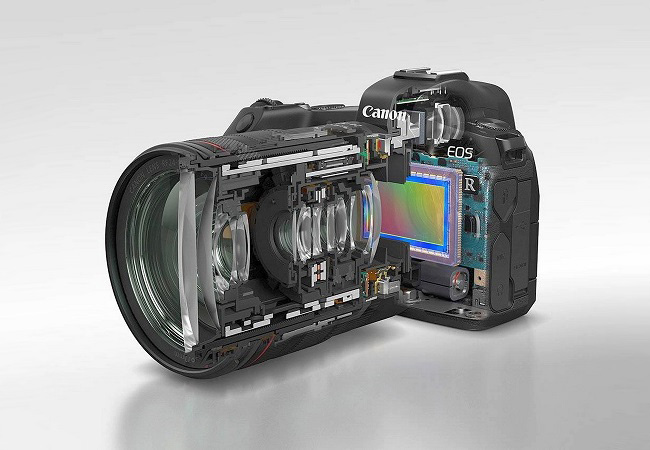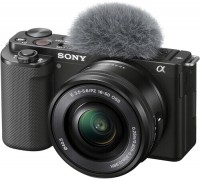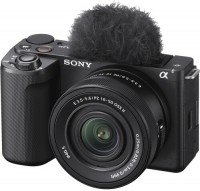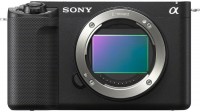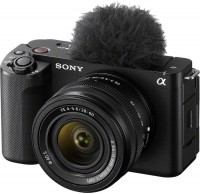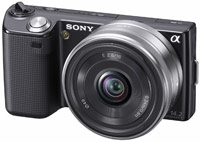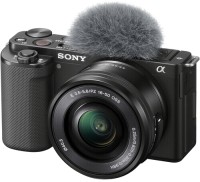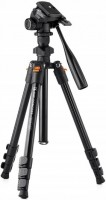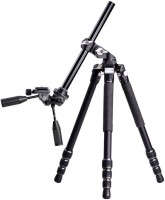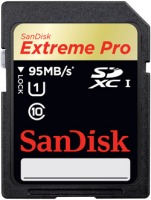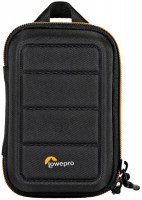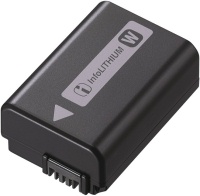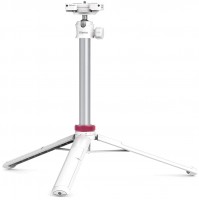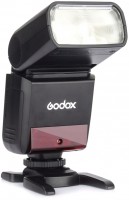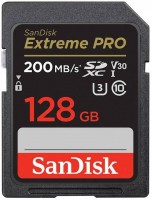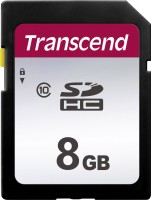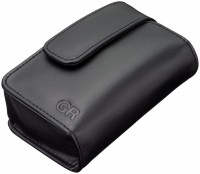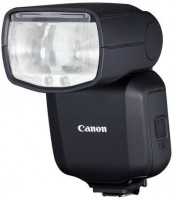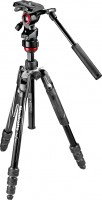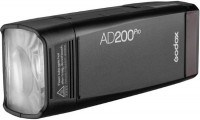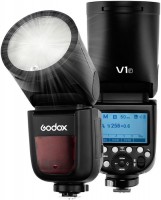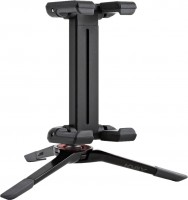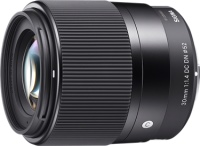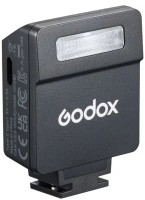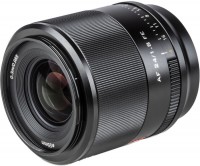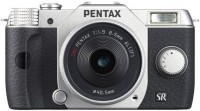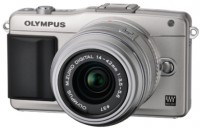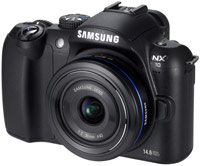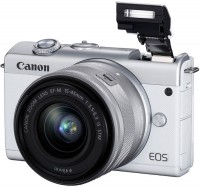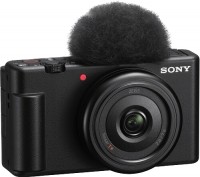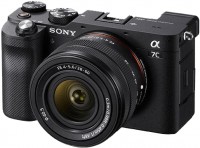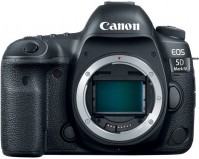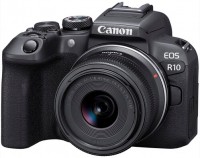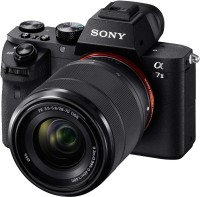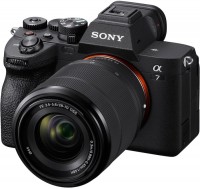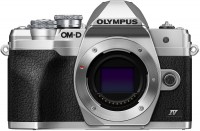Sony NEX-3
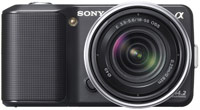 |
Sony NEX-3
Panel:APS-C (23x15.5 mm), 14 MPix
Snapshot size:4320x3240 px
ISO range:200-12800
Burst shooting:2.3 fps
Screen:3 '', oscillating
Mirrorless (MILC) camera, one of the first devices of this type from Sony. From the older model, the NEX-5 actually differs in the lower resolution of the recorded video (720p) and, slightly, in the resolution of the matrix — 14 megapixels versus 14.2. The matrix itself has an APS-C format and sensitivity up to ISO 12800. The camera has 10 scene programs, including panorama mode, and the 3" display is rotatable, which makes it easier to shoot from awkward positions. The lens is mounted using an E mount. Power is from the built-in battery.
All specifications
Specifications NEX-3
|
| |||||||||||||||||||||||||||||||||||||||||||||||||||||||||||||||||||||||||||||||||||||||||||||||||||||||||||||||||||||||||||||||||||||||||
The information in the model description is for reference purposes.
Always clarify the specifications and configuration of the product with the online store manager before purchasing.
Catalog Sony 2025 - new arrivals, bestsellers, and the most relevant models Sony.
Always clarify the specifications and configuration of the product with the online store manager before purchasing.
Catalog Sony 2025 - new arrivals, bestsellers, and the most relevant models Sony.
The main functions and capabilities of the NEX-3 digital camera:
Matrix:
The NEX-3 is equipped with a 14.6-megapixel APS-C format CMOS sensor. Such matrices are usually placed in SLR cameras, the large size of the sensor ensures a minimum noise level. In this case, the maximum ISO value reaches 12800.
Lens:
The Nex-3 is equipped with a new E-mount system designed to mount three proprietary lenses on the camera — E16 mm F2.8, E18-55 mm F3.5-5.6 and E18-200 mm F3.5-6.3. In the standard set, one is provided to choose from. Although the word Alpha is present in the full name of the Sony Alpha NEX models, the new camera is not directly compatible with the lenses of the Alpha mirror line of the same name. A new mount has been developed for NEX cameras, Sony E. Alpha lenses, as well as Minolta and Konica Minolta lenses, can be mounted using a special adapter LA-EA1, however, focus will only be manual.
Flash:
The NEX-3 does not have a built-in flash, but an external one is included. An external flash is installed in the connector on the top panel and secured with a screw. The flash does not have its own batteries, but is powered by the camera battery. Since the connector is non-standard, no "non-native" flashes will fit the NEX-3.
Viewfinder:
There is no built-in viewfinder in the camera, it is possible to install an external viewfinder in the Smart Accessory connector (however, such a viewfinder is designed only for the E16 mm F2.8 lens).
Display:
The camera is equipped with a 3\'\' widescreen rotatable TFT display. The swivel range is 90 degrees up and 45 degrees down from the rear panel, around the horizontal axis only. The screen is distinguished by high-quality colour reproduction for its class, it is well readable in the sun. There is a light sensor for auto brightness adjustment.
Shooting and video modes:
i-AUTO Intelligent Auto Mode:
Designed for novice users — or for those who simply do not want to go into the settings of the device, preferring to shoot at full auto. In this mode, the camera analyzes the shooting conditions and recognizes one of the following scenes: night view, night view + tripod, night portrait, backlight, portrait/backlight, portrait, landscape, or macro.
Software Auto:
The corresponding aperture and shutter speed values are displayed numerically on the screen. The automatically determined ISO value (in Auto ISO mode) is not displayed. There is no programme shift function in the mode (the ability to simultaneously change the value of two exposure parameters while maintaining the same exposure) in the camera.
Scene Mode:
handheld portrait, landscape, macro, sports, sunset, night portrait, night view and twilight.
Handheld Twilight Mode and Motion Blur Removal:
Handheld Twilight and Motion Blur Removal work very similarly. The camera takes six quick shots, which are then combined into one, which allows you to get a lower level of noise than in a single shot taken at the same exposure.
The difference is that in the "Motion Blur Elimination" mode, the camera strives to get the fastest possible shutter speed and goes to increase the ISO up to ISO6400, while the priority task of "Hand-held Twilight" is to get a high-quality picture with minimal noise, so here the camera tries to use a lower ISO (although if there is very little light, it also raises it up to 6400).
Panoramic view:
Shooting panoramas is organized in a simple, convenient and effective way. The direction of movement of the camera is set in the menu (one of four, right, left, up, down), and then, by pressing the shutter button, we simply move the camera in the appropriate direction, as if we were shooting a movie. Not only does the camera make seamless seams (in most cases), it also handles moving objects correctly. And a July 2010 firmware update allows you to create 3D panoramas that can be viewed on compatible BRAVIA 3D TVs.
In the menu, you can choose one of two options — Standard panorama, or Wide angle. In the first case, with a horizontal orientation of the camera, a resolution file of 8192x1856 pixels will be obtained, in the second — 12416x1856. If you shoot a "vertical panorama", then the resolution will be 3872x2160 and 5536x2160 pixels, respectively.
HDR Correction Function:
The HDR (High Dynamic Range) correction function is used to expand the dynamic range of images (the ability of the camera to reproduce a wider range of brightness within one frame, from the darkest to the brightest areas). In this mode, the camera automatically takes three shots in rapid succession, at different exposures, and then stacks them together to bring out detail in both the shadows and the highlights. This results in a much wider dynamic range.
Video mode:
The Sony NEX-3 can record video in MP4 format (1440x1080i resolution) or VGA.
Differences between Sony NEX-3 and Sony NEX-5:
The differences between these models are in the video format (NEX-3 does not support Full-HD, it is filmed in MP4, 1280x720p, 9 Mbps), as well as in the design (the NEX-5 case is made of magnesium alloy, it is slightly more compact, and on the NEX-3, the handle protrudes 5 mm less).
Pros and cons of Sony NEX-3:
Pros:
The standard battery of the camera is designed for 370 frames. A feature is the indication of the battery level in percent, which makes it much easier to predict the need for recharging.
Contents of delivery:
Package includes: lens E16 mm F2.8 or E18-55 mm F3.5-5.6 or both, hand and shoulder straps, external flash, charger, cable for connecting to a computer, CD with software and user guide.
Colour options:
Matrix:
The NEX-3 is equipped with a 14.6-megapixel APS-C format CMOS sensor. Such matrices are usually placed in SLR cameras, the large size of the sensor ensures a minimum noise level. In this case, the maximum ISO value reaches 12800.
Lens:
The Nex-3 is equipped with a new E-mount system designed to mount three proprietary lenses on the camera — E16 mm F2.8, E18-55 mm F3.5-5.6 and E18-200 mm F3.5-6.3. In the standard set, one is provided to choose from. Although the word Alpha is present in the full name of the Sony Alpha NEX models, the new camera is not directly compatible with the lenses of the Alpha mirror line of the same name. A new mount has been developed for NEX cameras, Sony E. Alpha lenses, as well as Minolta and Konica Minolta lenses, can be mounted using a special adapter LA-EA1, however, focus will only be manual.
Flash:
The NEX-3 does not have a built-in flash, but an external one is included. An external flash is installed in the connector on the top panel and secured with a screw. The flash does not have its own batteries, but is powered by the camera battery. Since the connector is non-standard, no "non-native" flashes will fit the NEX-3.
Viewfinder:
There is no built-in viewfinder in the camera, it is possible to install an external viewfinder in the Smart Accessory connector (however, such a viewfinder is designed only for the E16 mm F2.8 lens).
Display:
The camera is equipped with a 3\'\' widescreen rotatable TFT display. The swivel range is 90 degrees up and 45 degrees down from the rear panel, around the horizontal axis only. The screen is distinguished by high-quality colour reproduction for its class, it is well readable in the sun. There is a light sensor for auto brightness adjustment.
Shooting and video modes:
i-AUTO Intelligent Auto Mode:
Designed for novice users — or for those who simply do not want to go into the settings of the device, preferring to shoot at full auto. In this mode, the camera analyzes the shooting conditions and recognizes one of the following scenes: night view, night view + tripod, night portrait, backlight, portrait/backlight, portrait, landscape, or macro.
Software Auto:
The corresponding aperture and shutter speed values are displayed numerically on the screen. The automatically determined ISO value (in Auto ISO mode) is not displayed. There is no programme shift function in the mode (the ability to simultaneously change the value of two exposure parameters while maintaining the same exposure) in the camera.
Scene Mode:
handheld portrait, landscape, macro, sports, sunset, night portrait, night view and twilight.
Handheld Twilight Mode and Motion Blur Removal:
Handheld Twilight and Motion Blur Removal work very similarly. The camera takes six quick shots, which are then combined into one, which allows you to get a lower level of noise than in a single shot taken at the same exposure.
The difference is that in the "Motion Blur Elimination" mode, the camera strives to get the fastest possible shutter speed and goes to increase the ISO up to ISO6400, while the priority task of "Hand-held Twilight" is to get a high-quality picture with minimal noise, so here the camera tries to use a lower ISO (although if there is very little light, it also raises it up to 6400).
Panoramic view:
Shooting panoramas is organized in a simple, convenient and effective way. The direction of movement of the camera is set in the menu (one of four, right, left, up, down), and then, by pressing the shutter button, we simply move the camera in the appropriate direction, as if we were shooting a movie. Not only does the camera make seamless seams (in most cases), it also handles moving objects correctly. And a July 2010 firmware update allows you to create 3D panoramas that can be viewed on compatible BRAVIA 3D TVs.
In the menu, you can choose one of two options — Standard panorama, or Wide angle. In the first case, with a horizontal orientation of the camera, a resolution file of 8192x1856 pixels will be obtained, in the second — 12416x1856. If you shoot a "vertical panorama", then the resolution will be 3872x2160 and 5536x2160 pixels, respectively.
HDR Correction Function:
The HDR (High Dynamic Range) correction function is used to expand the dynamic range of images (the ability of the camera to reproduce a wider range of brightness within one frame, from the darkest to the brightest areas). In this mode, the camera automatically takes three shots in rapid succession, at different exposures, and then stacks them together to bring out detail in both the shadows and the highlights. This results in a much wider dynamic range.
Video mode:
The Sony NEX-3 can record video in MP4 format (1440x1080i resolution) or VGA.
Differences between Sony NEX-3 and Sony NEX-5:
The differences between these models are in the video format (NEX-3 does not support Full-HD, it is filmed in MP4, 1280x720p, 9 Mbps), as well as in the design (the NEX-5 case is made of magnesium alloy, it is slightly more compact, and on the NEX-3, the handle protrudes 5 mm less).
Pros and cons of Sony NEX-3:
Pros:
- Sufficiently comfortable grip with a small body size
- Large APS-C sensor is the smallest interchangeable lens camera with APS-C sensor
- Rotatable (on one axis) display
- High resolution monitor 920,000 dots
- High-brightness monitor mode provides unique readability on a sunny day
- Contextual button functions — the optimal approach to control with a small number of buttons
- Fast autofocus, at the level of SLR cameras
- Ability to manually set the autofocus area
- Useful HDR correction feature
- Shooting panoramas with one camera wire, with high-quality auto-gluing
- Handheld Twilight mode stacks six frames to reduce noise
- Detailed system of hints and tips for filming
- HDMI output available
- When mounted on a tripod, access to the battery and memory card is preserved
- Displaying the battery charge on the monitor — in percent
- No built-in optical sensor shift stabilizer
- No built-in optical viewfinder
- Limited set of Sony E-standard lenses
- No built-in flash
- Non-standard connector for connecting an external flash (included in the kit)
- No OSD shortcut menu
- Changing modes and almost all parameters is carried out through the in-camera menu, the organization of which is not optimal, the control is slow
- No programmable controls, no camera customization options
- Live histogram disappears from screen while entering exposure compensation
- When shooting video — no control over exposure parameters, ISO, focus point
- In playback mode — thumbnail display requires menu access
- In playback mode, photos and movies are spaced apart
- No in-camera conversion from RAW to JPEG
- No wireless control for external flashes
- Rapid battery drain
The standard battery of the camera is designed for 370 frames. A feature is the indication of the battery level in percent, which makes it much easier to predict the need for recharging.
Contents of delivery:
Package includes: lens E16 mm F2.8 or E18-55 mm F3.5-5.6 or both, hand and shoulder straps, external flash, charger, cable for connecting to a computer, CD with software and user guide.
Colour options:
- Article NEX3AR.CEE2 — colour: red
- Article NEX3AB.CEE2 — colour: black
We recommendCompare using chart →

